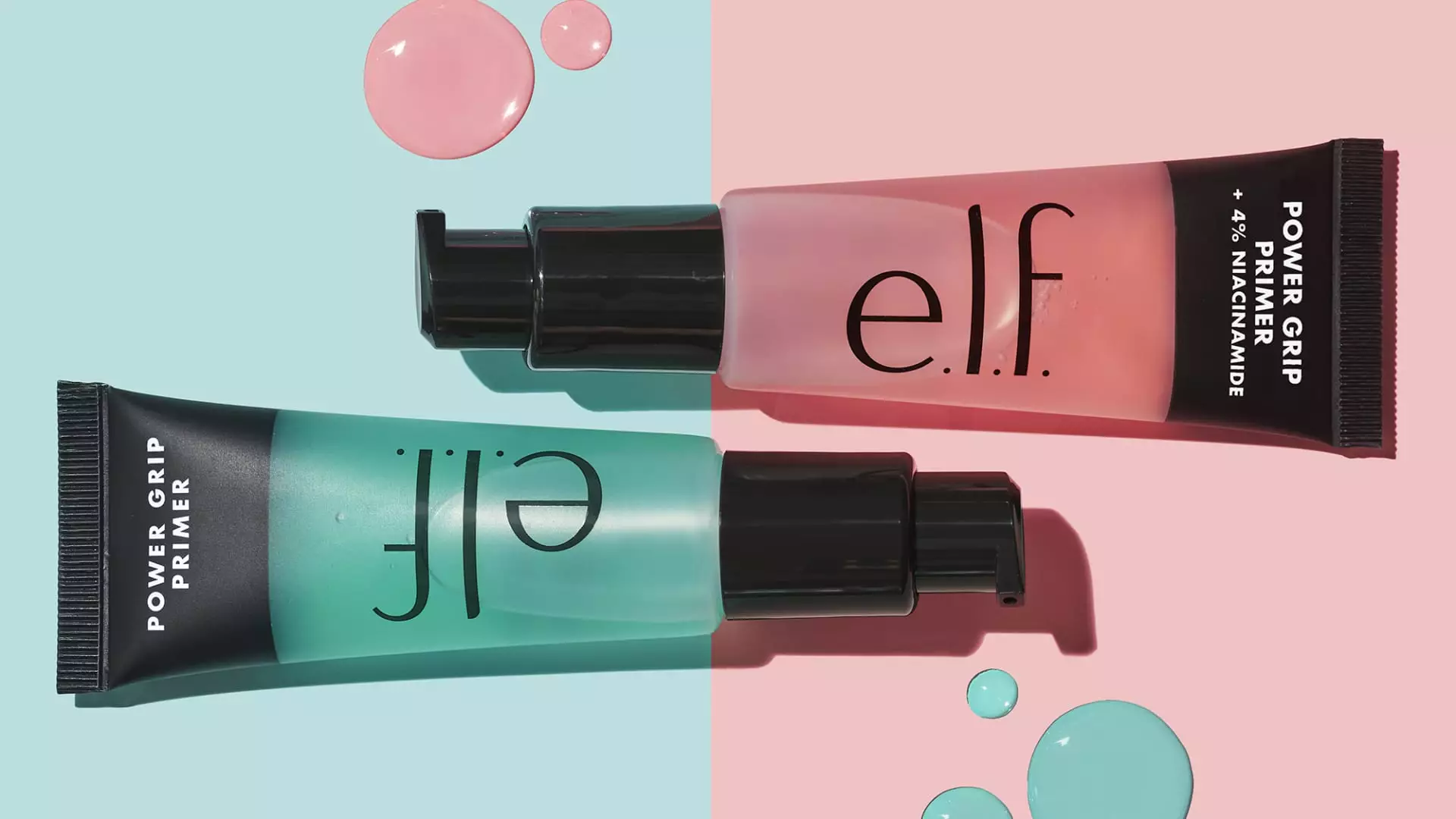E.l.f. Beauty: A Bright Outlook Amid Impressive Sales Surge

E.l.f. Beauty has recently demonstrated remarkable sales growth, posting a staggering 40% increase in revenue in its second fiscal quarter. This impressive trajectory led the cosmetics retailer to revise its full-year guidance upward, anticipating sales between $1.32 billion and $1.34 billion for fiscal 2025, a notable enhancement from previously projected figures of $1.30 billion. The strong performance greatly surpassed analysts’ expectations, as evidenced by both earnings per share and revenue figures that exceeded forecasts.
In terms of detailed performance metrics, E.l.f. reported adjusted earnings of $0.77 per share, demolishing typical expectations of only $0.43. This underscores the brand’s ability to significantly outpace the competition in a crowded marketplace. Additionally, the company’s total revenue reached $301 million, surpassing the predicted $286 million. This remarkable achievement showcases the effective strategies adopted by E.l.f. in capitalizing on market trends.
While it’s true that E.l.f. reported net income of $19 million or $0.33 per share for the quarter ending September 30—down from $33 million or $0.58 a year prior—adjustments for one-time items reveal a more favorable picture. Excluding these anomalies, E.l.f. posted earnings of $45 million or $0.77 per share, emphasizing a solid operational performance despite the previous year’s comparative figures.
The impressive rise in sales from $216 million the previous year to the current $301 million speaks volumes about E.l.f.’s growing market share. The company’s decision to raise its revenue guidance from a range of $1.28 billion to $1.3 billion demonstrates a confidence that positions it favorably against competitors, ultimately enhancing investor sentiment.
The phenomenal growth of E.l.f. Beauty can be attributed, in part, to its innovative marketing strategies that have deeply resonated with a younger demographic. CEO Tarang Amin highlighted the company’s appeal across multiple generations, noting that E.l.f. holds the top position among Gen Z shoppers while also attracting Gen Alpha and millennials. This multi-generational appeal speaks to the strength and versatility of the company’s branding efforts.
With a strategy focused on providing high-quality products at competitive prices, E.l.f. continues to build brand loyalty. Consumers are increasingly looking for value, and E.l.f.’s positioning as an affordable alternative to premium cosmetics has helped the brand capture the interest of a diverse customer base. This strategic branding has also prompted major retailers like Target and Walgreens to expand shelf space dedicated to E.l.f., further solidifying its presence in brick-and-mortar stores.
Despite rising selling, general, and administrative costs—which increased by $74 million to $186.1 million, amounting to 62% of net sales—E.l.f. managed to maintain a robust gross margin of 71%. This represents a slight increase from the previous year, demonstrating the company’s effective cost management amid rising operational expenses.
Amin attributes this margin growth to favorable foreign exchange conditions, strategic price adjustments, and the core value proposition of E.l.f. products. The brand has successfully positioned itself as a leader in “prestige quality at extraordinary prices,” which has driven both consumer interest and profit margins.
Looking beyond U.S. borders, E.l.f. has made significant strides in international markets, which now account for approximately 21% of total revenue. This expansion not only diversifies the company’s earnings but also mitigates risks associated with potential tariff increases, particularly those anticipated in light of political changes.
Overall, E.l.f. Beauty’s recent performance is a testament to its strong market positioning, effective branding strategies, and operational resilience. As the company continues to innovate and adapt to the dynamic beauty landscape, it is well-poised for sustained growth in the years ahead. With a solid financial foundation and an expanding consumer base, E.l.f. sets a powerful example of how strategic foresight can unlock potential in an ever-evolving industry.





